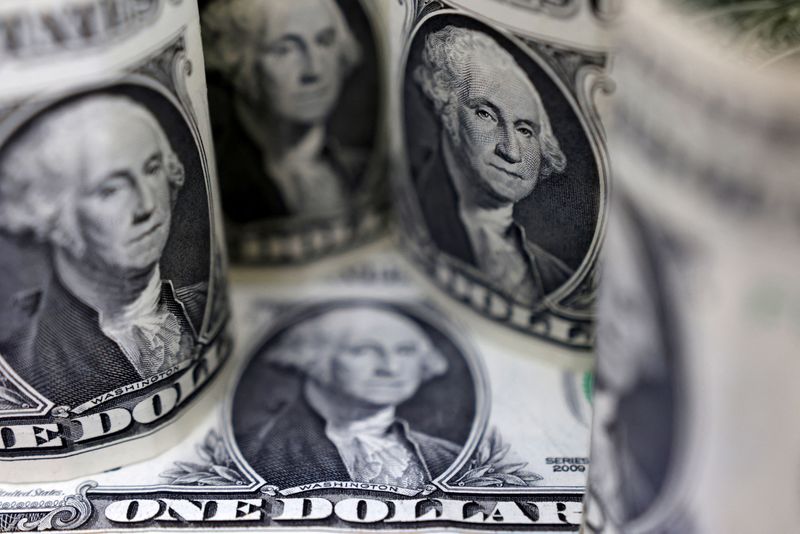By Samuel Indyk
LONDON (Reuters) - The dollar's rebound extended for a third day on Wednesday after some Federal Reserve policymakers left the door open to further rate hikes, as traders looked to a speech from Chair Jerome Powell on the central bank's future policy path.
The greenback, which hit a seven-week low at the start of the week in the wake of the Fed's decision to hold its policy rate steady and on data pointing to a cooling U.S. labour market, has found a floor as markets remain at odds over whether a peak in U.S. rates has been reached and how soon the Fed could begin easing policy.
Futures point to a roughly 16% chance of another hike by January, but are pricing in a 21% chance that rate cuts could come as early as March, according to the CME FedWatch tool.
The U.S. dollar index, which last week clocked its sharpest weekly fall in about four months, rose 0.2% to 105.75 and was on track for a weekly gain.
"The data side has been very quiet so the main drivers have been the hawkish comments from Fed speakers," said ING FX strategist Francesco Pesole. "They've been trying to push back against the dovish rate repricing."
A slew of Fed policymakers on Tuesday maintained a balanced tone and said they were weighing strong economic data, some signs of a slowdown, and the impact of higher long-term bond yields as they considered whether they would need to hike rates further to bring down inflation.
Focus now turns to remarks from Fed Chair Powell later on Wednesday.
"There's risk we could see further U.S. dollar strength today assuming Powell and (company) continue to remind markets of their 'higher for longer' narrative," said Matt Simpson, senior market analyst at City Index.
DARKENING GROWTH OUTLOOK
The euro fell 0.3% to $1.0670, further weighed by a darkening growth outlook in the euro zone. Data on Wednesday showed September retail sales fell 0.3% month-on-month in the bloc.
"The mixed outlook for consumer and investment spending leaves the euro zone very close to recession," said Wells Fargo (NYSE:WFC) economist Nick Bennenbroek.
"Regardless of whether the euro zone falls into recession, we see enough growth headwinds to suggest that the European Central Bank's monetary tightening is done."
The British pound, which earlier in the week hit a seven-week top against the dollar above $1.24, was last some distance away, falling 0.3% to $1.2260.
The Japanese yen again slipped to the weaker side of 150 per dollar, heading back towards levels that have investors on watch for currency intervention.
"It's clear we are back in the intervention space," ING's Pesole said.
"The rate of change has been rather substantial in the last two sessions. If we see dollar-yen rising by another substantial amount today then intervention alarm bells will start ringing very loudly."
The yen last stood at 150.80 per dollar, having dropped more than 1% since Monday's peak.
The Australian dollar was down another 0.2% to$0.6425, having slid 0.8% in the previous session - its largest daily decline in about a month.
The Reserve Bank of Australia (RBA) on Tuesday raised interest rates to a 12-year high, ending four months of steady policy, but watered down its tightening bias to make it more conditional on incoming data.

"We do not expect that the RBA will follow up with another rate increase in December," said Westpac's chief economist Luci Ellis.
"The last paragraph of the statement contained a shift in language... This reads as the board hoping not to have to raise rates again, but being very willing to do so if things change. There is not enough new information between now and the December meeting to drive a change in view."